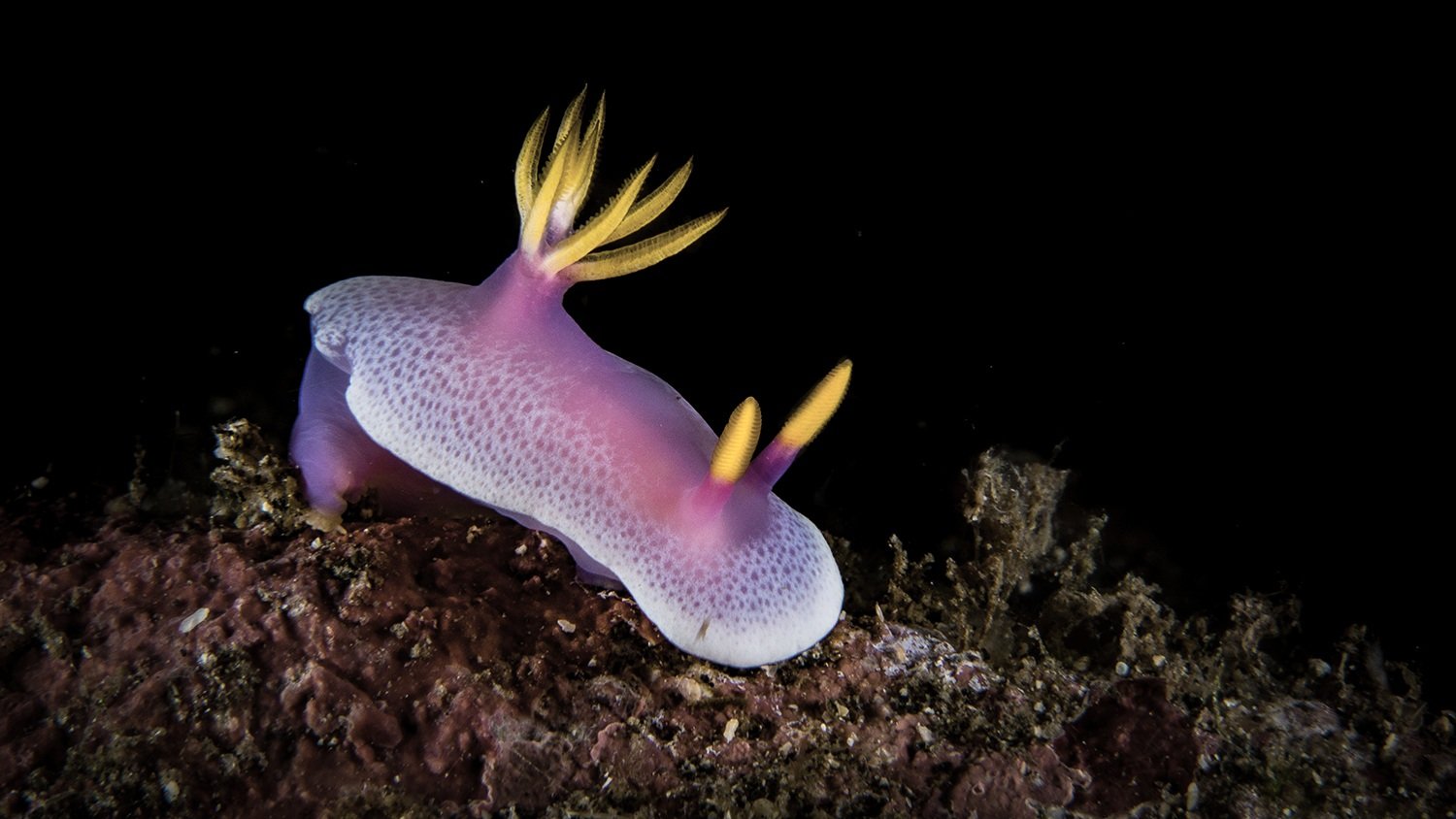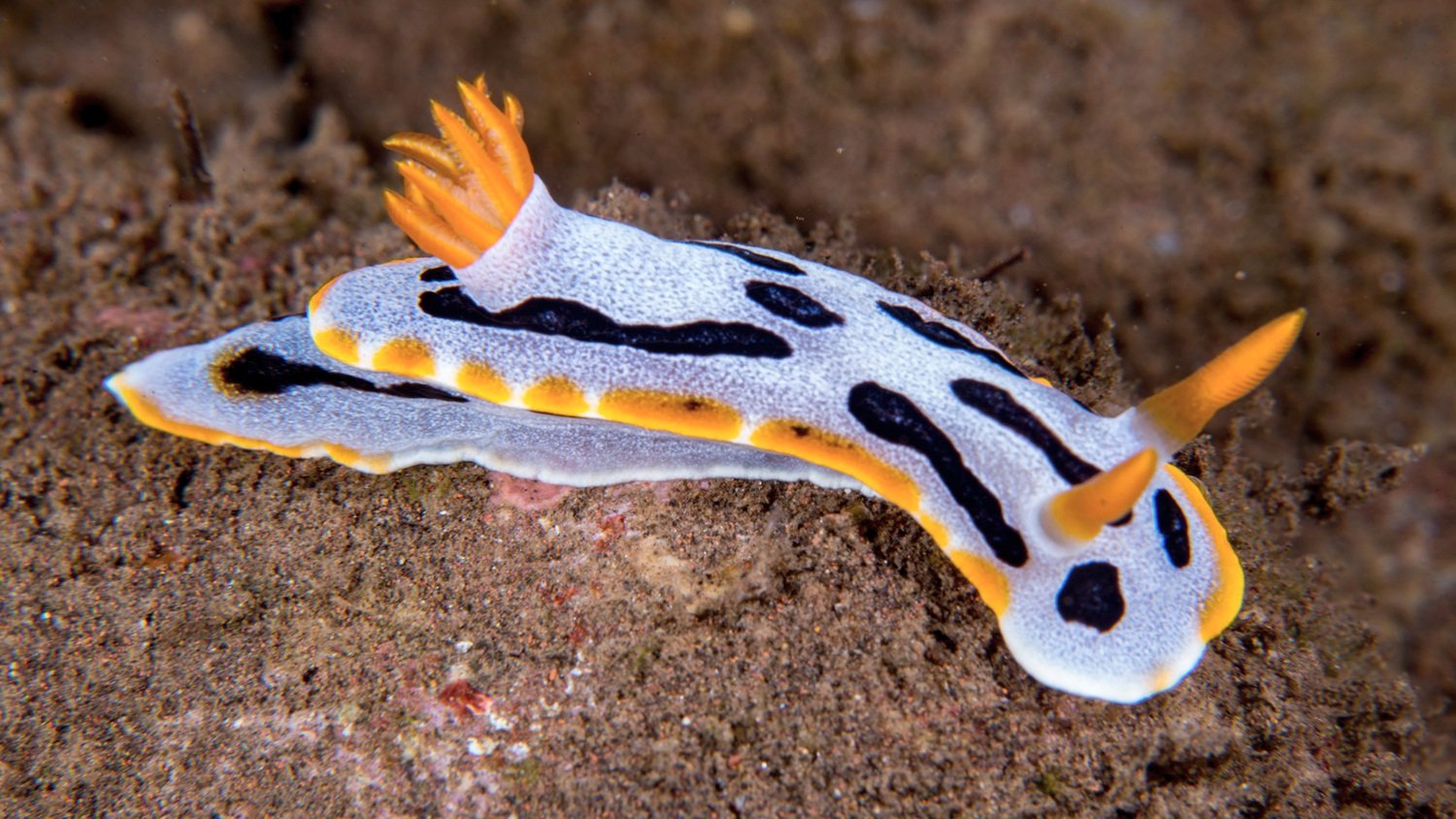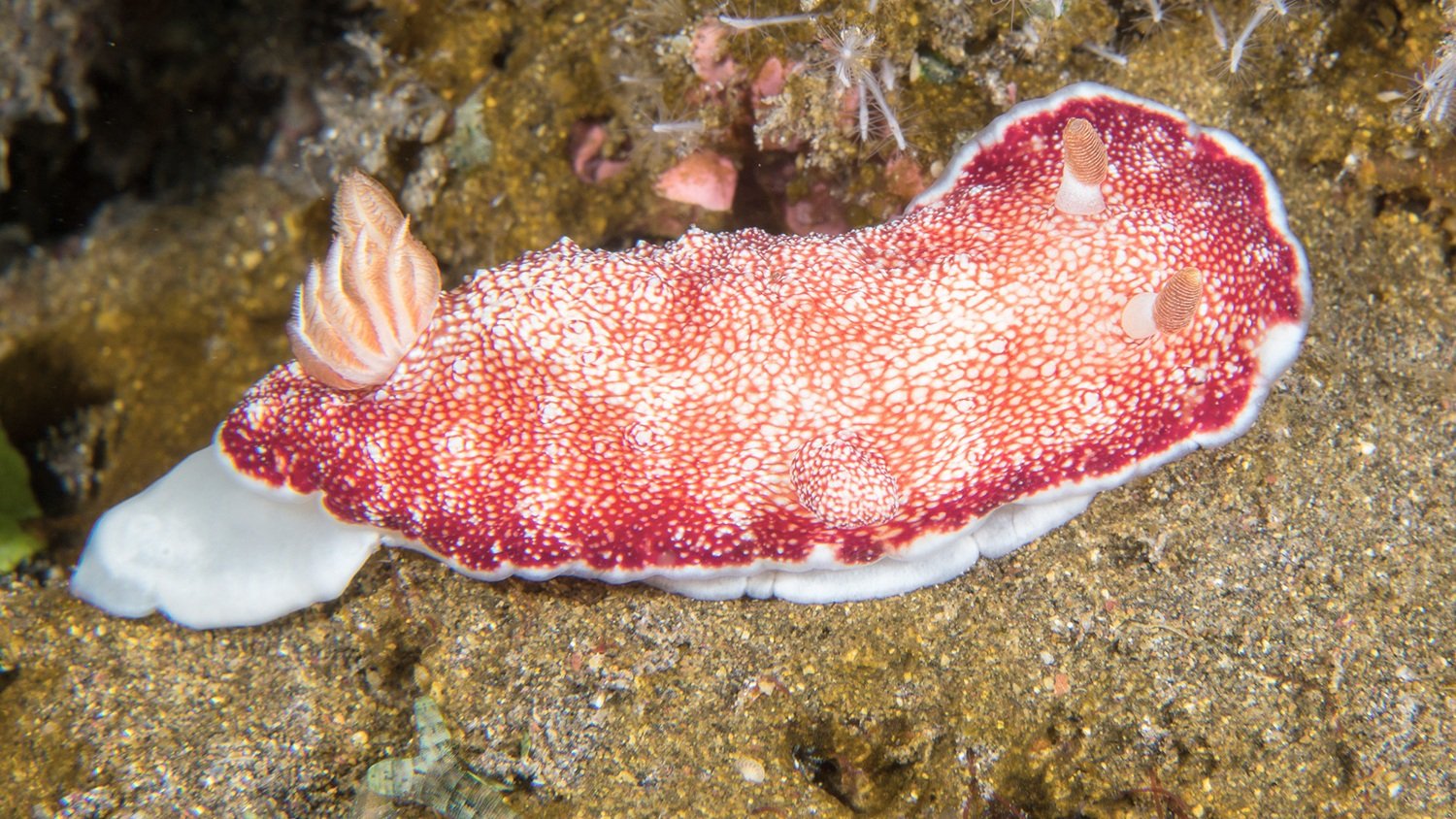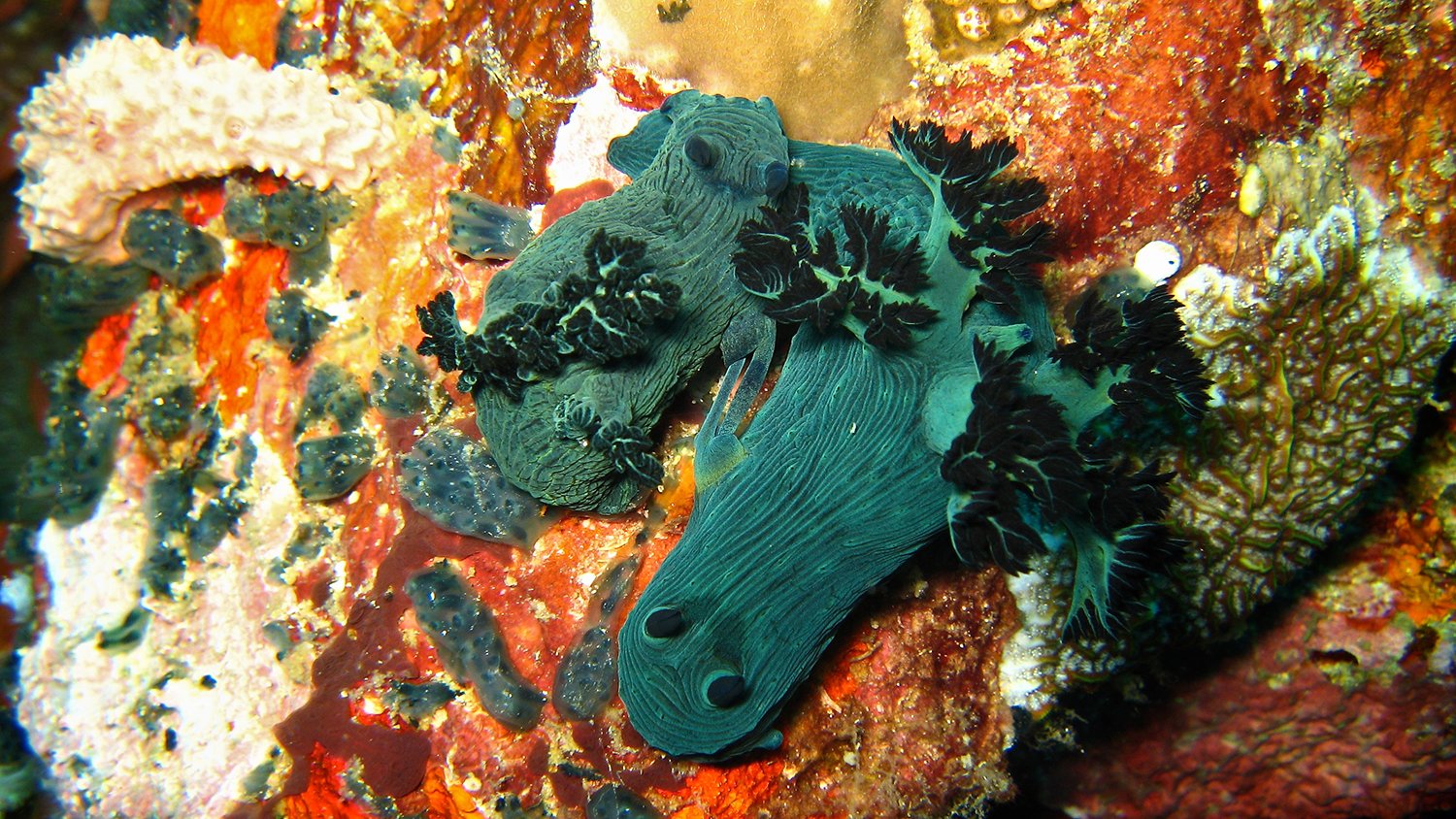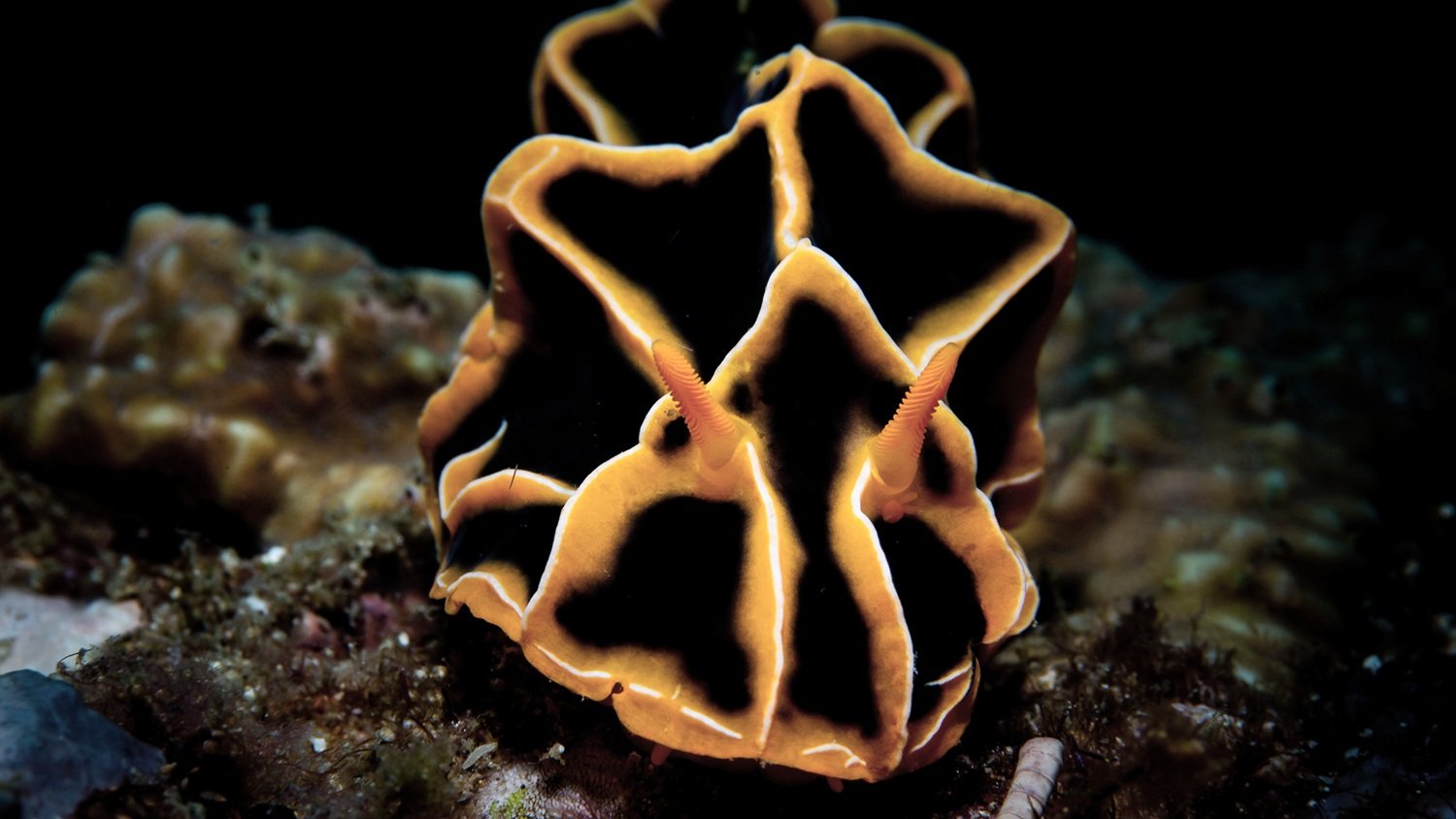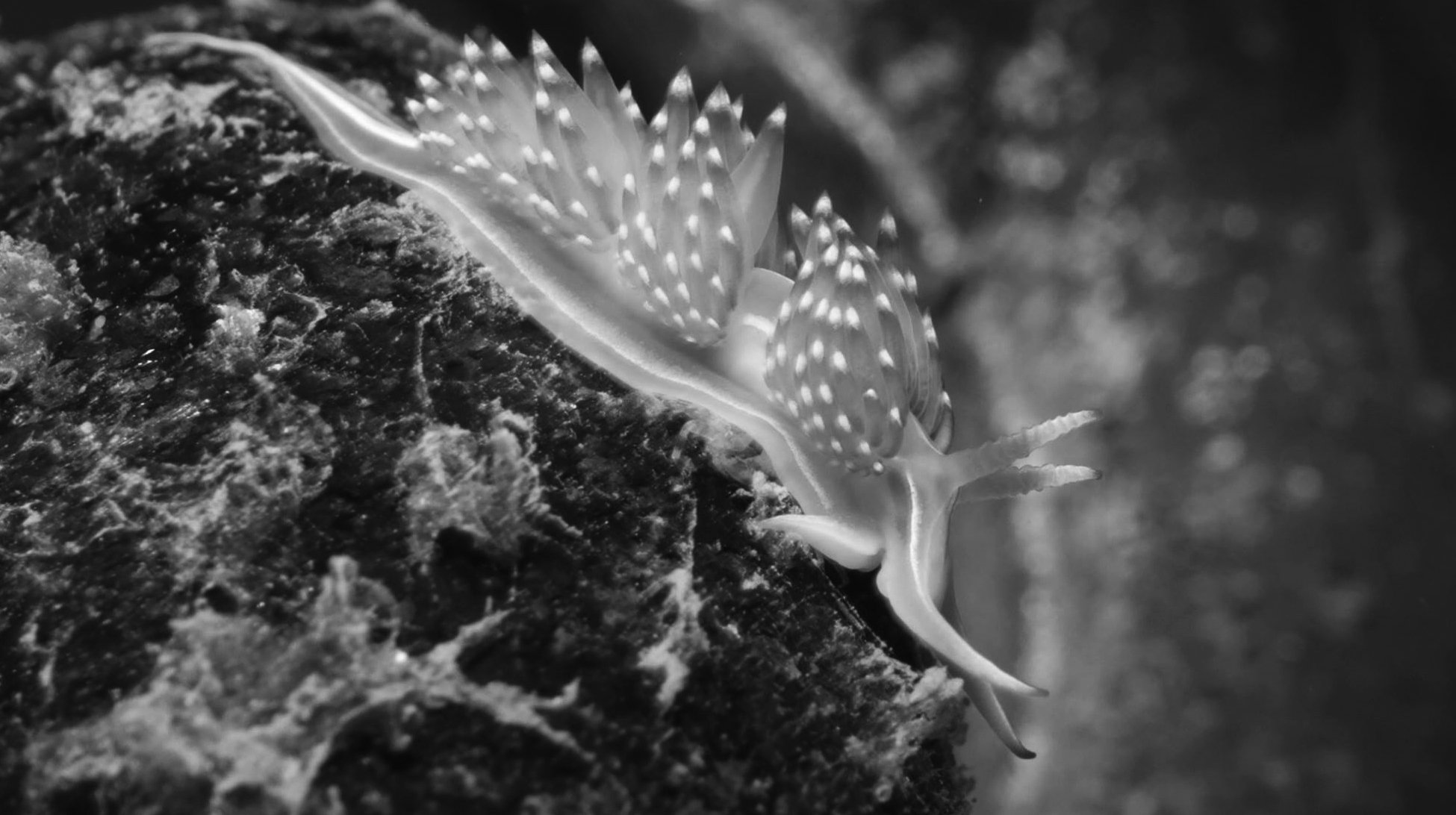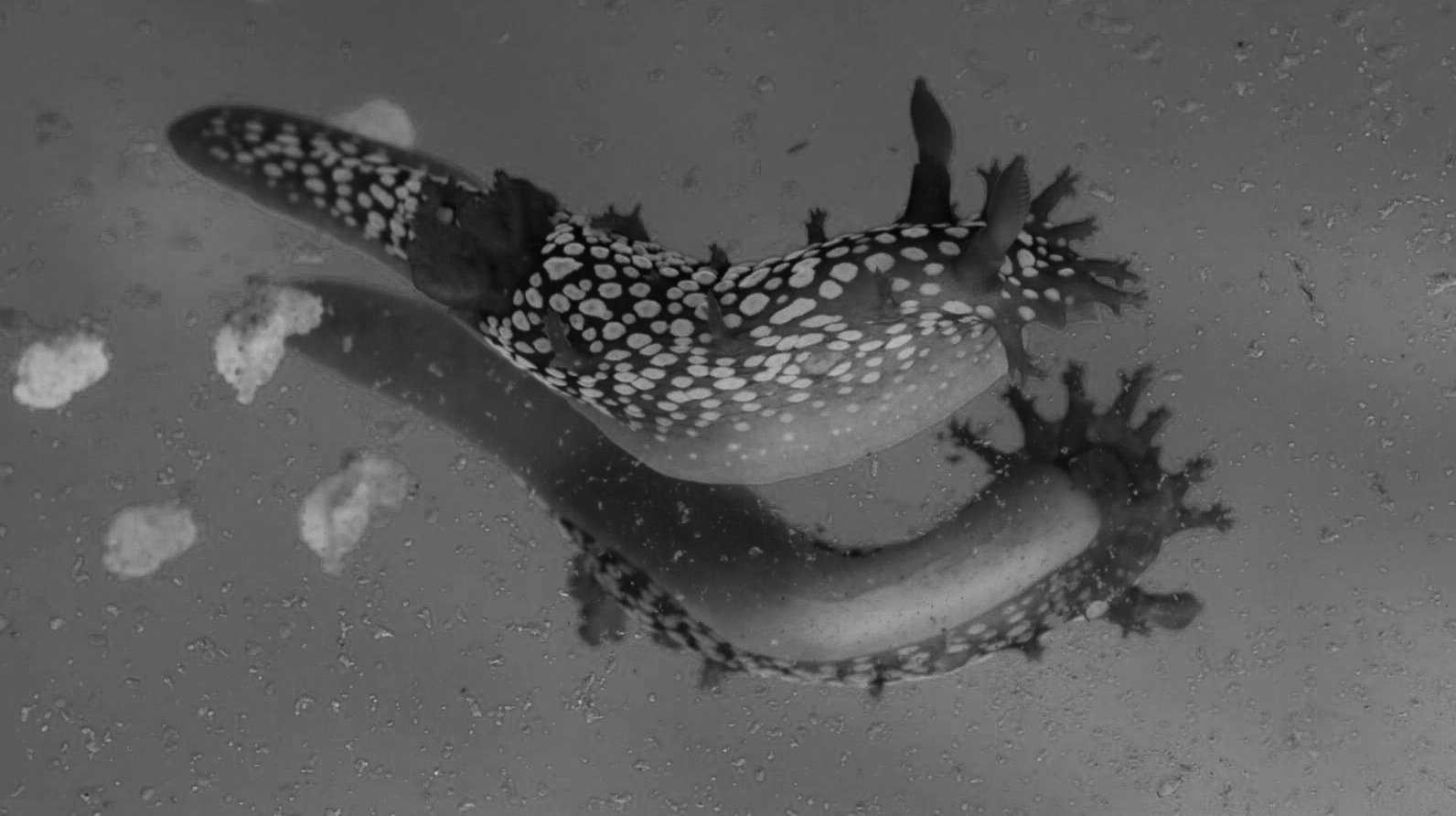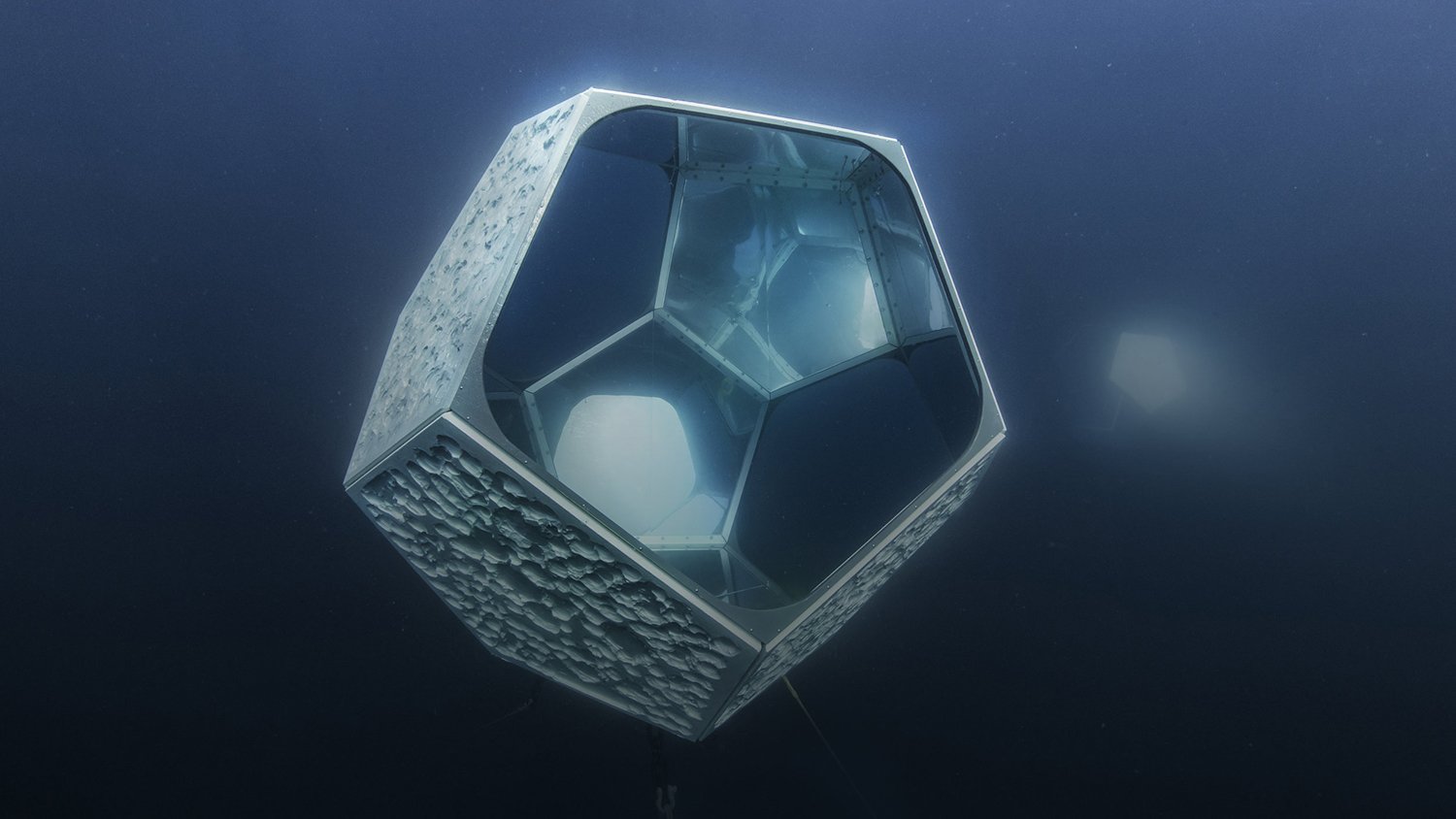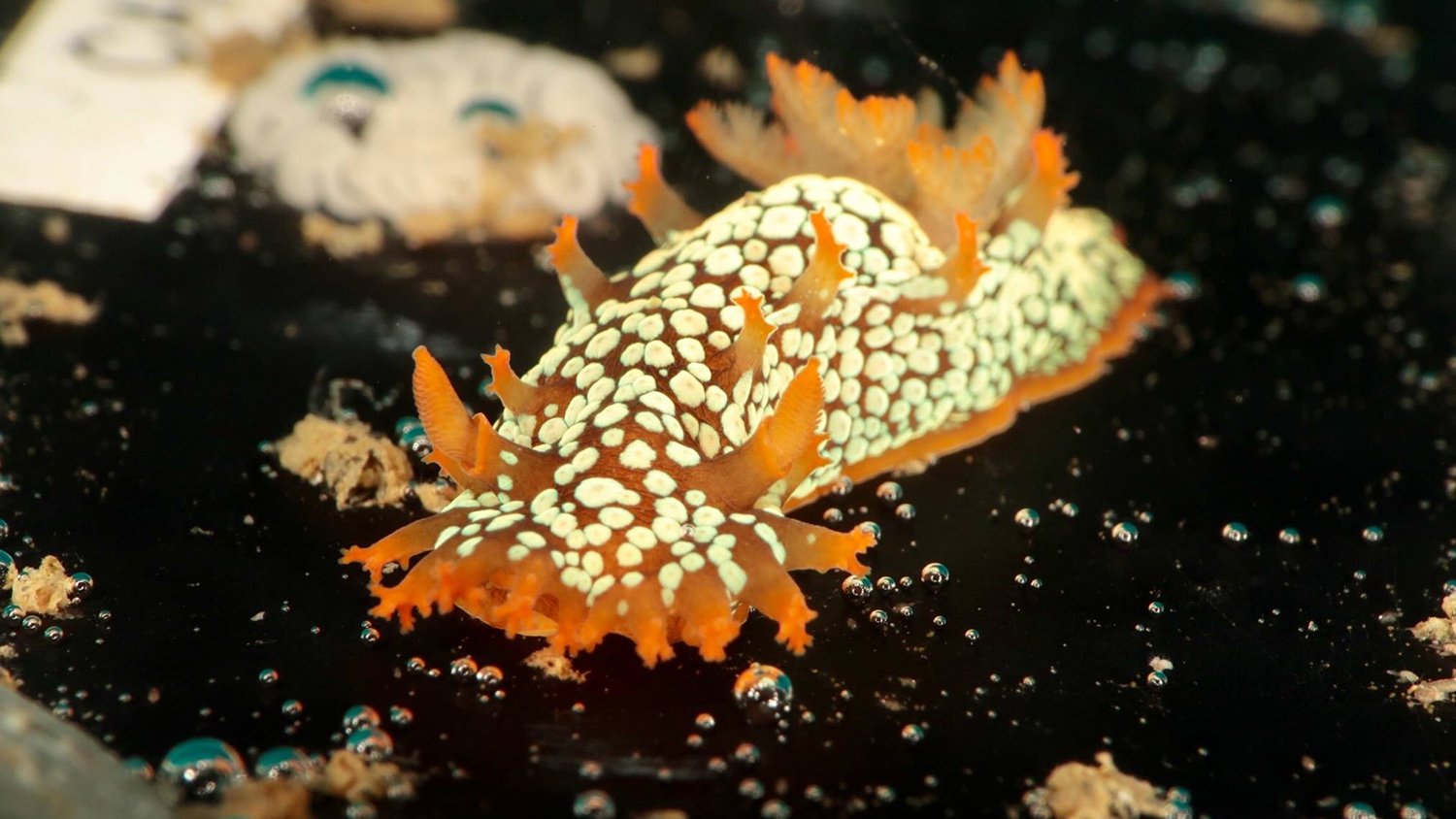Ocean wonders: Nudibranchs
“Creatures in the ocean are beyond anything humans have been able to imagine”
Dr. Sylvia Earle
The nudibranch Nembrotha aurea. Photo by Bernard Picton.
More than maybe any other ocean creature, nudibranchs rank as possibly the most surreal, beautiful and otherworldly animals on the planet. With over 3000 distinct species and counting, these marine mollusks come in an insane variety of colors, forms and sizes – ranging from microscopic to half a meter long.
They are found all over the world’s oceans – mainly in tropical seas but also at the poles and around the extreme environments of deep sea hydrothermal vents. Most crawl along the seabed, coral reefs and rocky outcrops, but others drift in the water column or wriggle around at the surface – like the ‘what, that can’t be real’ blue dragon nudibranch pictured below, which eats venomous jellyfish like the Portuguese man o' war for breakfast and can deliver a painful sting.
The word ‘Nudibranch’ is derived from Latin and Greek and means ‘naked gills’ – as many species breathe through elaborate branchial plumes on their back. These beautiful, branching structures are exposed gills, absorbing oxygen from the surrounding water. Most species also have two or more antenna-like organs called rhinophores protruding from their head, adding to their alien appearance.
Some species also benefit from tentacle-like outgrowths called ‘cerata’ on their backs. Beyond helping with gas exchange, these structures house toxic nematocysts that nudibranchs get from prey like jellyfish and sea anemones. These stinging structures pass through the nudibranch and end up at the tips of each tentacle, ready to defend against attack.
A blue dragon (Glaucus atlanticus). Photo by Sylke Rohrlach.
Nudibranchs are simultaneously male and female, with both sets of sex organs. After meeting up with another nudibranch in a slow motion, dance-like encounter, each individual lays a ribbon-like string of eggs. Only one species, Pteraeolidia ianthina, guards its eggs. The rest are left to defend themselves after hatching through camouflage (not all nudibranchs are brightly colored) or a combination of poisonous skin and stinging cerata.
Despite their often incredible color schemes, nudibranchs have only a basic sense of light and dark, and so ironically never see each other’s incredible forms, stripes and adaptations – which have inspired a series of Pokémon characters and a fashion collection.
A Galaxy of Nudibranchs (gallery)
Photos by: Erik Lucas, Wojtek Meczynski, Jayne Jenkins, David P. Robinson, Coral Reef Image Bank, Bernard Picton, Alexander R. Jenner
Like coral, some nudibranchs have evolved to coexist with zooxanthellae – an arrangement which provides a safe home for the algae and an additional power source for the host. These ‘solar powered’ nudibranchs get the zooxanthellae by eating corals, keeping them alive within highly-evolved structures in their body.
As if nudibranchs weren’t already wondrous enough, scientists are studying their chemical compounds for potential anti-microbial qualities and even for new medicines. A compound found in the nudibranch Jorunna funebris, for instance, was used to develop the drug Zalypsis®, which has shown promising anti-tumour activity in cells of breast, prostate and renal cancers.
Above: Alongside fish, barnacles and even a curious seal, nudibranchs were among the marine creatures that visited and colonised the Doug Aitken x Parley art installation Underwater Pavilions off the California coast. Photographed by Michael Francisco and later safely rehoused by him and other divers.




